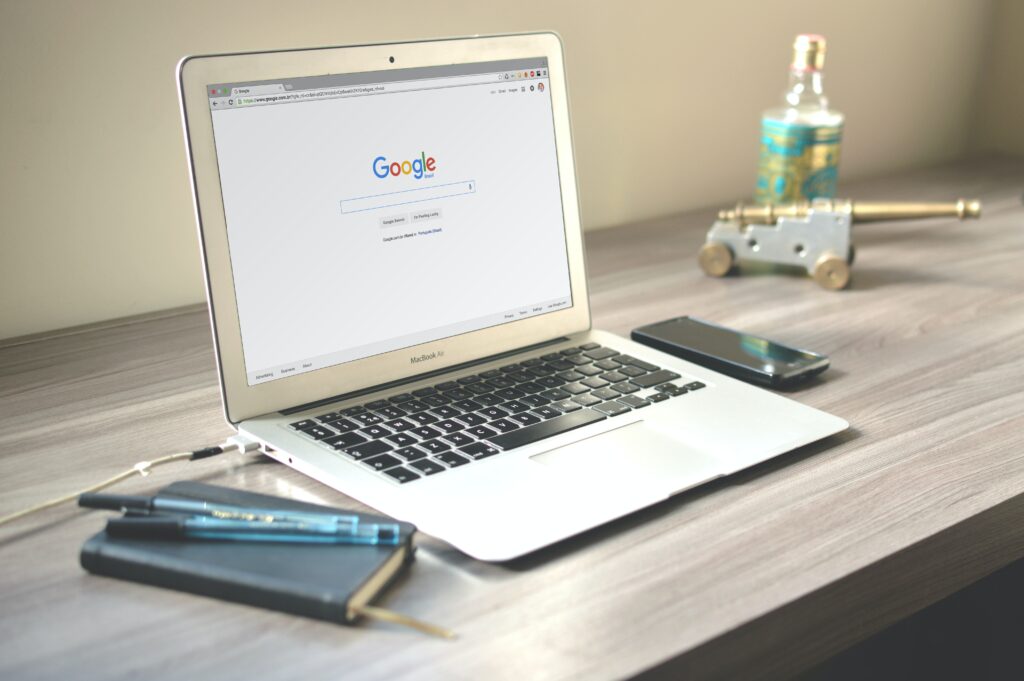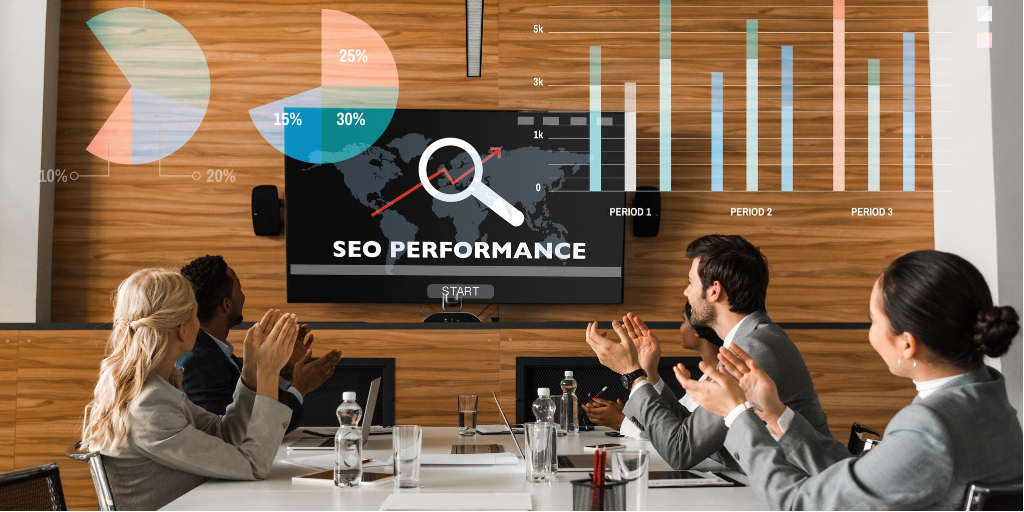Optimizing images for seo involves adding descriptive file names and alt tags, reducing file size, and using high-quality images relevant to the content. Images play a crucial role in enhancing the overall visual appeal of a web page, which in turn drives user engagement and improves the overall user experience.
However, to leverage the benefits of images, it is important to optimize them for search engines. Image optimization for seo involves adding descriptive and keyword-rich file names, optimizing alt tags, reducing file size, and using high-quality images that are relevant to the content of the web page.
In this article, we will explore the importance of image optimization for seo, how to optimize images for seo, and some best practices to follow.

Credit: www.amazon.com
The Impact Of Images On Seo
Visuals are essential for website engagement and conversion rates. Images, infographics, and videos can help grab visitors’ attention and make it easier for them to understand the content. According to a study, articles with images get 94% more views than those without images.
However, images impact more than just engagement and conversions. Their impact also extends to seo.
Discuss The Effect Of Visuals On Website Engagement And Conversion Rates
Visitors get attracted to content that includes images, bright colors, attractive font style, and has a perfect balance of text and visuals. By using visuals, you can make your content more engaging and hold users’ attention for a longer time.
Moreover, quality visuals will also keep visitors on your site for longer, thereby reducing your site’s bounce rate and increasing the time spent on the site.
- Using high-resolution images instead of low-quality visuals can create a massive impact on user retention and reduce bouncing rates.
- Infographics and videos can also be used to present complex information and increase user engagement while reducing bounce rates.
Explain How Search Engines Interpret Images And Why This Is Relevant For Rankings
Search engines cannot “see” pictures like humans do. Instead, they rely on their algorithms to interpret images from alt tags, descriptions, and file names. As a website owner, it’s essential to optimize images’ alt tags and descriptions because they provide context to search engines about the image.
- Optimized images make it easier for search engines to recognize the relevance of the images, thereby reducing the possibility of them marking an image as spam and improving its ranking.
- Images with optimized alt-tags and descriptions increase the chances of them showing up in search results, multiply traffic to websites, and improve seo rankings.
Outline The Impact Of Optimized Images On Page Speed, User Experience, And Mobile-Friendliness
Optimized images have a direct impact on page speed, user experience, and mobile-friendliness. Images that are not optimized can slow down page load time, thereby reducing user retention rates.
- Compressed images ensure that they don’t bog down a website’s load time, eliminate the risk of a slow website load time, and improve user experience.
- Optimizing images for mobile-friendliness can improve website loading speed on mobile devices, reduce bounce rates, and improve rankings on serps.
Best Practices For Image Optimization
Providing an overview of the most important best practices for image optimization is essential for improving website performance, as well as increasing user engagement and overall user experience. Employing image optimization methods can also help in maximizing your website’s visibility in search results.
In this section, we will discuss the key points to consider for best practices in image optimization.
Image File Size, Format, And Compression
The importance of image file size, format, and compression cannot be overstated. Here are some key points to consider:
- Large image files can take longer to load, increasing the load time of your website. This can negatively impact both user experience and search engine ranking.
- Converting your images to webp format can significantly reduce file size without compromising image quality.
- Compressing your image files without compromising quality can also improve load times. You can use image optimization tools such as tinypng or compressor.io to compress your images.
- It’s important to note that while smaller file sizes are generally better, image quality should not be sacrificed. Find a balance between reducing file size and maintaining image quality.
Image Alt Tags, File Names, And Captions
Image alt tags, file names, and captions help search engines understand what your image is about and how it relates to the content on your webpage. Here are some key points to consider:
- Alt tags should be descriptive and relevant to the image content, while also incorporating target keywords where applicable.
- File names should also be descriptive and relevant to the image content. Avoid using generic names such as “img001.jpg” as this does not provide any context to the search engine.
- Captions help provide context to your image and give additional information to the user. Use captions to enhance user experience and include relevant keywords where appropriate.
Implementing best practices for image optimization can have a significant impact on the performance and visibility of your website in search results. By focusing on image file size, format, and compression, as well as image alt tags, file names, and captions, you can improve user experience and drive higher engagement on your website.
Image File Types And Formats
Images are an essential part of seo, and choosing the right type of image format and compression can make all the difference in your website’s performance. In this section, we’ll explore the different file types and formats and offer advice on choosing the best option for your website.
Discuss The Different Types Of Image File Formats And When To Use Each
There are several different file types and formats of images that you can use on your website. Here’s a quick rundown of each type and when to use them:
- Jpeg (joint photographers expert group): This format is perfect for large, complex images such as photographs. It offers a high-quality compression that maintains image quality while reducing file size.
- Png (portable network graphics): Pngs are ideal for images with transparent backgrounds as they offer a high-quality, lossless compression. They’re best suited for icons, logos, and graphics.
- Gif (graphics interchange format): Gifs use a lossless compression to create animated images that have a limited color palette. They’re usually small in size and are perfect for small animations or memes.
- Svg (scalable vector graphics): Svgs are perfect for icons, logos, and graphics that need to be resized without compromising quality. They’re scalable and don’t pixelate when enlarged or shrunk.
Explain What Lossy And Lossless Compression Is
Compression refers to the process of reducing the size of an image file without compromising its quality. Lossy compression refers to a process where an image is compressed by removing unimportant information. The result is a smaller file size but with reduced quality.
Lossy compression is suitable for large images and photographs where some minor loss in quality is acceptable.
Lossless compression, on the other hand, refers to the process of compressing an image without losing any quality. The image is compressed by removing redundant data without reducing its quality. Lossless compression is suitable for small images such as icons and logos.
Offer Advice On Choosing The Best Image Format And Compression For Different Types Of Images And Purposes
Choosing the right format and compression for your images is crucial for website performance. Here are some tips to help you choose the best option for your website:
- For large, complex images such as photographs, use a jpeg format and lossy compression to maintain quality while reducing file size.
- For small images such as icons and logos, use a png format and lossless compression to maintain quality.
- For small, animated images such as memes and small animations, use a gif format and lossless compression.
- For icons, logos, and graphics that need to be resized, use an svg format.
Choosing the right format and compression for your images is essential for website performance. By following the tips and guidelines mentioned above, you can optimize your images for seo and provide a seamless user experience.
Alt Text, File Names, And Captions
Alt Text, File Names, And Captions: The Key Elements Of Image Optimization And Seo
Images are a vital component of any website or blog, and optimizing them is crucial for seo success. Among the various factors that affect image optimization, three elements hold more importance than others when it comes to improving your website’s search engine ranking: alt text, file names, and captions.
Why Alt Text, File Names, And Captions Are Important For Image Optimization And Seo
While images enhance the look of your web pages, search engines are unable to view them as humans do. Hence, it becomes necessary to provide them with context. Here’s why:
- Alt text: Alt text or alternative text is an html attribute that describes the contents of an image when it’s not displayed. It is essential because search engines use it to understand the image’s content, even when it’s not visible to the user.
- File names: The file name of an image should convey information about its content. By including relevant keywords in the file name, you can provide critical information to the search engines to understand the image’s context.
- Captions: Captions are often overlooked when it comes to image optimization, but they offer an opportunity to include additional context for both search engines and users. Captions can help convey the message of the image and provide more information about the accompanying text.
Guidelines And Best Practices For Optimizing These Elements
Here are some best practices to follow for optimizing alt text, file names, and captions:
Alt Text
- Keep it concise and descriptive, within 125 characters.
- Include relevant target keywords, but avoid keyword stuffing.
- Use natural language and describe the image’s content as accurately as possible.
- If the image is purely decorative and doesn’t convey any information, use “” to indicate that it’s blank.
File Names
- Use hyphens to separate words in the file name
- Keep file names shorter than 50 characters
- Include relevant keywords, but don’t overdo it
- Use lowercase letters
Captions
- Keep them short and sweet
- Write relevant captions that explain the image content
- Incorporate target keywords if possible
- Ensure they flow naturally with the surrounding text
Optimizing images for seo is essential, and alt text, file names, and captions play a crucial role in achieving it. By following the guidelines and best practices outlined above, you can improve your website’s ranking and enhance the user experience.
Advanced Image Seo Tactics
While image optimization is a crucial aspect of seo, advanced marketers and seo specialists should employ advanced strategies to stay ahead of the game. Here are some advanced image seo tactics to help improve your website’s visibility.
Leverage Advanced Techniques Like Image Sitemaps, Lazy Loading, And Responsive Images
Image sitemaps: image sitemaps give search engines more in-depth information about your website’s images. Creating an image sitemap means search engines can better understand your images and display them in search results. It is essential to ensure that all images on your website are adequately optimized and submitted to the image sitemap.
Lazy loading: lazy loading is a technique that allows images to load only when users scroll through the web page. It speeds up page loading times while saving bandwidth, improving user experience. By implementing lazy loading, images are only loaded when users need to view them, resulting in better website performance.
Responsive images: with mobile usage continuing to rise, responsive images are becoming increasingly important. Responsive images resize based on the user’s device to ensure the image displays correctly, no matter the device. By optimizing your website’s images for mobile devices, you can improve the user experience and boost your search engine rankings.
Highlight The Role Of Image Metadata And Structured Data In Improving Image Seo
Image metadata: metadata is essential in optimizing images for search engines. Ensure to add descriptive and relevant alt-tags, file names, and captions to images. This information will be used by search engines to understand your images and display them accordingly.
Structured data: structured data provides additional information to search engines about your website’s content. Adding structured data improves the chances of displaying rich results in search engine listings. For images, structured data informs search engines about the image’s context, such as the description, license, and creator information.
By implementing advanced image seo tactics like image sitemaps, lazy loading, responsive images, metadata, and structured data, you can ensure your website’s images are optimized correctly and increase your chances of higher search engine rankings.
Measuring The Roi Of Image Optimization
Are you looking for a way to measure the success of your image optimization? This is where tracking metrics comes in. It is essential to keep an eye on metrics like page speed, engagement, and conversion rates to determine the impact of image optimization.
Here are some tips and tools you can use to measure and monitor your image seo metrics.
Explain How To Measure The Success Of Your Image Optimization Efforts.
One of the best ways to measure the success of your image optimization efforts is to track your website’s organic traffic. Here’s how you can do it:
- Use google analytics to track the organic search traffic to your website
- Track how visitors behave on your site. Do they bounce immediately or spend time browsing? Make sure to measure and improve the metrics that matter the most.
Discuss Why Tracking Metrics Like Page Speed, Engagement, And Conversion Rates Is Essential.
Improving your site’s page speed can significantly impact user experience and reduce bounce rates. Engagement metrics such as time spent on the website and the number of pages visited can also help you gauge your customer’s interest in your content.
Tracking conversion rates can help you measure whether your optimized images are driving leads, sales and revenue growth.
Offer Tips And Tools For Measuring And Monitoring Image Seo Metrics.
Here are some tips and tools you can use to measure and monitor your image seo metrics:
- Use google’s pagespeed insights tool to receive suggestions for improving your website performance.
- Use google’s search console to check your website’s search engine traffic, ranking, and index status.
- Consider using the google analytics tool, which offers both quantitative and behavioral insights.
- Make use of third-party apps and tools like semrush, ahrefs, and moz, which offer image seo audits, keyword research, backlink analysis, and competitive analysis.
Tracking and analyzing the right seo metrics is essential for measuring the roi of your image optimization efforts. It helps you refine your strategy, identify new opportunities, and optimize existing content. Remember always to measure and improve the metrics that matter most to your business.
Frequently Asked Questions Of Seo For Image Optimization
How Does Image Optimization Affect Seo?
Image optimization helps in improving website loading speed, enhancing user experience, and increasing website ranking on search engines. When images are well optimized, they become more discoverable to search engines, and it boosts website visibility.
What Are The Best Image Optimization Techniques?
The best image optimization techniques are compressing the image size, resizing the image, and using the right image format. Compressing images reduces file size without compromising quality. Resizing images to the correct dimensions reduces its file size and enhances page speed.
The right image format ensures the image is clear and the file size is minimal.
How Can Alt Attributes Help In Image Optimization?
Alt attributes help in describing images to search engines, assistive technology, and visually impaired users. Optimizing alt attributes by using relevant and descriptive content for each image helps search engines understand the context of the image and make them more discoverable.
Can The Image File Name Affect Seo?
Yes, naming images accurately and descriptively can boost their search engine visibility. It helps search engines understand the image and its purpose. Use descriptive names that match the content around the image and avoid generic, meaningless names.
How Important Is Using Proper Image Dimensions?
Using proper image dimensions is crucial in image optimization because it affects website loading speed. Large images that are not optimized take longer to load, causing users to lose interest and increase bounce rate. Improper image dimensions can also result in pixelation or distortion.
Conclusion
As we wrap up our discussion on seo for image optimization, it is clear that optimizing images for search engines is an integral part of any successful seo strategy. With the increasing importance of visual content, it is crucial to ensure that your images are optimized for search engines to drive more traffic to your website.
From understanding the importance of file names, alt text, and captions to focusing on image quality and page loading speed, there are numerous techniques that can improve your website’s image optimization. By implementing these techniques, you can not only rank higher on search engine result pages but also provide a better user experience for your audience.
Don’t forget to also regularly check your image optimization efforts and adjust accordingly to ensure the best results. Happy optimizing!



